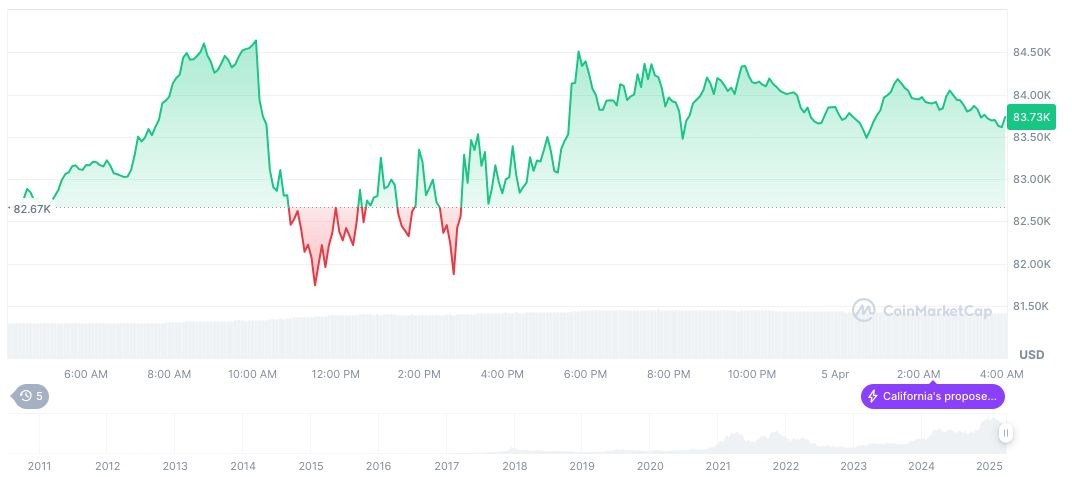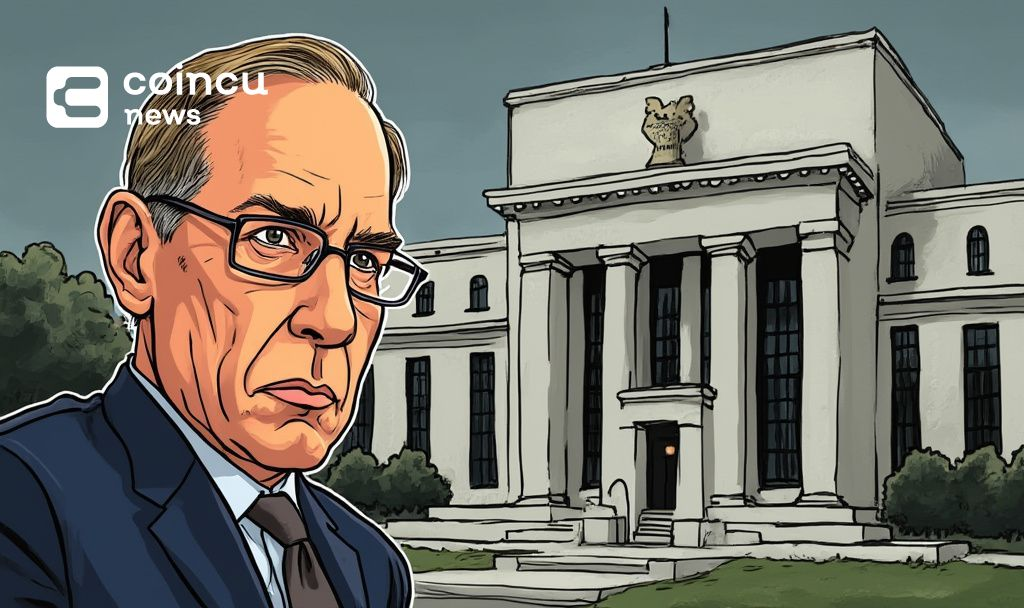 CaryptosHeadlines Media Has Launched Its Native Token CHT.
Airdrop Is Live For Everyone, Claim Instant 5000 CHT Tokens Worth Of $50 USDT.
Join the Airdrop at the official website,
CryptosHeadlinesToken.com
CaryptosHeadlines Media Has Launched Its Native Token CHT.
Airdrop Is Live For Everyone, Claim Instant 5000 CHT Tokens Worth Of $50 USDT.
Join the Airdrop at the official website,
CryptosHeadlinesToken.com
- The VIX index reached 41.65, reflecting heightened market volatility.
- Both equity and cryptocurrency markets were affected.
- Safe-haven assets saw increased demand as risk-averse sentiment grew.
On April 5, 2025, the VIX index rose to 41.65, reflecting heightened market volatility due to global trade tensions. Investor sentiment shifted sharply, influencing both equity and cryptocurrency markets.
The VIX, known as the “fear index,” surged to 41.65 on April 5, marking its highest intraday level since August 2024. Market conditions were heavily influenced by U.S. President Trump’s trade tariff announcements, contributing to uncertainty. Equity markets displayed significant stress, with S&P 500 futures falling approximately 3%.
Key Developments, Impact, and Reactions
“Crypto markets mirror broader risk sentiment, suggesting caution during high VIX periods.” — Arthur Hayes, Co-founder, BitMEX
The rise in the VIX suggests increased apprehension among investors, causing a sell-off in risk-sensitive assets like cryptocurrencies. A high VIX often signals caution, impacting trading behaviors and risk appetites. In response, safe-haven assets such as U.S. Treasuries, gold, and certain fiat currencies saw increased demand.
Key figures, including President Trump, emphasized their trade policy commitments despite market reactions. His stance exacerbated investor fears, effectively reinforcing the sentiment of market instability.
Historical Context and Cryptocurrency Price Impacts
Did you know? The VIX’s current levels mirror those observed during past financial crises, often leading to significant impacts on both equities and crypto markets, underscoring the risk-averse atmosphere dominating today’s market.
Bitcoin (BTC) trades around $83,747.97 with a market cap of approximately 1.66 trillion, maintaining a market dominance of 62.09%. Recent price changes show a decrease of 0.53% over the last week and a more extended slide of 8.65% over the past 30 days, according to CoinMarketCap.


Expert analysis from Coincu indicates that prolonged high VIX periods could lead to further cryptocurrency market corrections. Attention to risk mitigation strategies remains vital as regulatory reviews of trade and financial policies unfold.












